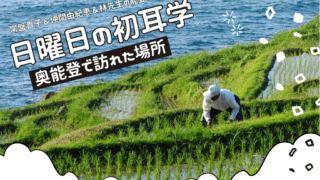2024年11月9日(土)に、金沢市指定無形民俗文化財である「加賀獅子」を披露する『加賀獅子共演会』が、JR金沢駅もてなしドーム鼓門前で開催されます
羽咋「能登獅子」、白山「あばれ獅子」、射水「百足獅子」など県内各地の様々な流派の獅子舞も登場!
それぞれの特色ある獅子舞が見れる貴重な機会、ぜひ金沢駅までお出かけしてみてはいかがでしょう
加賀獅子共演会@金沢駅もてなしドーム鼓門前 開催概要

羽咋「能登獅子」、白山「あばれ獅子」、射水「百足獅子」と金沢「殺し獅子」が一堂に会す、『加賀獅子共演会』が11月9日(土)に、金沢駅もてなしドーム鼓門前で開催されます
金沢市指定無形民俗文化財である「加賀獅子」の技の継承を図り、広く加賀獅子を市民や観光客の方に知っていただくために開催されているイベントで、今回は5年ぶりの開催!
また金沢市外から
の3団体を迎え、ゲスト団体が演じる各地域の特色ある獅子舞も見所です
ぜひご家族ご友人らと『加賀獅子共演会』を見に、金沢駅まで出かけてみませんか?
| イベント名 | 令和6年度加賀獅子共演会 |
| 開催日 | 2024年11月9日(土)※雨天決行 |
| 開催時間 | 13:30~16:40 |
| 会場 | 金沢駅もてなしドーム鼓門前 (〒920-0858 石川県金沢市木ノ新保町2) |
| アクセス | JR金沢駅兼六園口(東口)から徒歩すぐ |
| 料金 | 入場無料 |
| 公式サイト | 加賀獅子共演会(金沢旅物語) |
| 問い合わせ先 | 加賀獅子保存協会(金沢市文化財保護課内) |
加賀獅子共演会@金沢駅もてなしドーム鼓門前 プログラム
- 13:30~開会あいさつ(加賀獅子保存協会会長)
- 13:40~演技① 大野町獅子舞保存会【金沢市】
- 14:10~演技② 石同新町獅子舞保存会(ゲスト・白山市)
- 14:40~演技③ 二の丸町青年団(ゲスト・富山県射水市)
- 15:10~演技④ 千木町獅子舞保存会【金沢市】
- 15:40~演技⑤ 吉崎町青年団(ゲスト・羽咋市)
- 16:10~演技⑥ 二日市八幡養老獅子保存会【金沢市】
- 16:40閉会
加賀獅子とは

獅子舞は日本全国で見られる伝統的な芸能で、獅子の衣装を着て頭は獅子頭で表現されます
獅子は魔除けの霊獣とされているため、獅子舞は日本では年間を通じて多くの祭りや祝賀行事で披露されます。同様の伝統的な舞はアジア各地に見られ、日本の獅子舞は奈良時代(710〜794年)にまで遡ると考えられています。
獅子舞の最中に獅子に頭を噛まれると賢くなると言われています
金沢の獅子舞は「殺し獅子」と呼ばれています
加賀獅子は、豪華で大きな獅子頭と三味線、笛、太鼓の囃方がすべて中へ入ってしまう大きな蚊帳で構成されています
加賀獅子のもう1つの特徴は棒振りです
棒振りは一般的に全て木で作られた杖、剣、ほこ、鎌、鎖などの「武器」を使った武術の技を取り入れており、最後に獅子を討ち取るところが大きな特徴となっていて、加賀の「殺し獅子」とも言われています
加賀市市の起源ははっきりとは分かっていませんが、江戸時代中期以降に始まったと考えられています
江戸時代末期には急速に人気が高まり、1860年代中期から後半にかけて卯辰山天満宮の創建を祝う祭りでは、各町で獅子舞の共演が行われたという記録が残っています
What is Kaga-Jishi ?
Shishi-mai(Japanese lion dancing)is a traditional performing art, common throughout Japan, in which dancers wear a lion costume with a head represented by a mask. Because lions are considered spirit animals that can ward off evil, these dances are preformed at many other festivals and celebrations throughout the year, in Japan. Similar traditional dances can be found throughout Asia, and the shishi-mai in Japan is thought to date back to the Nara period(710-794). It is said that if the lion bites your head during the lion dance, you will become smarter.
Kaga-Jishi, Kanazawa’s shishi-mai, involve large, showy heads and the body.Another distinctive feature of Kaga-Jishi is bo-furi, a type of performance incorporating martial arts techniques with sticks, sword, halberds, sickles and chains, and othea “weapons” all generally made out of wood, ultimately used to strike down the shsihi, lion.
The origins of Kaga-Jishi are not clearly known, but it is suspected that these performances began during the mid-Edo era(1603-1868) or later. Toward the end of the Edo era, they rapidly grew in popularity, and records show that various towns were shishi-mai rivals at the festival held to celebrate the establishment of Utatsuyama Tenmangu Shrine, in the mid to-late 1860s.







